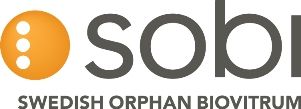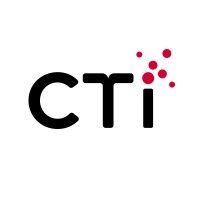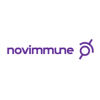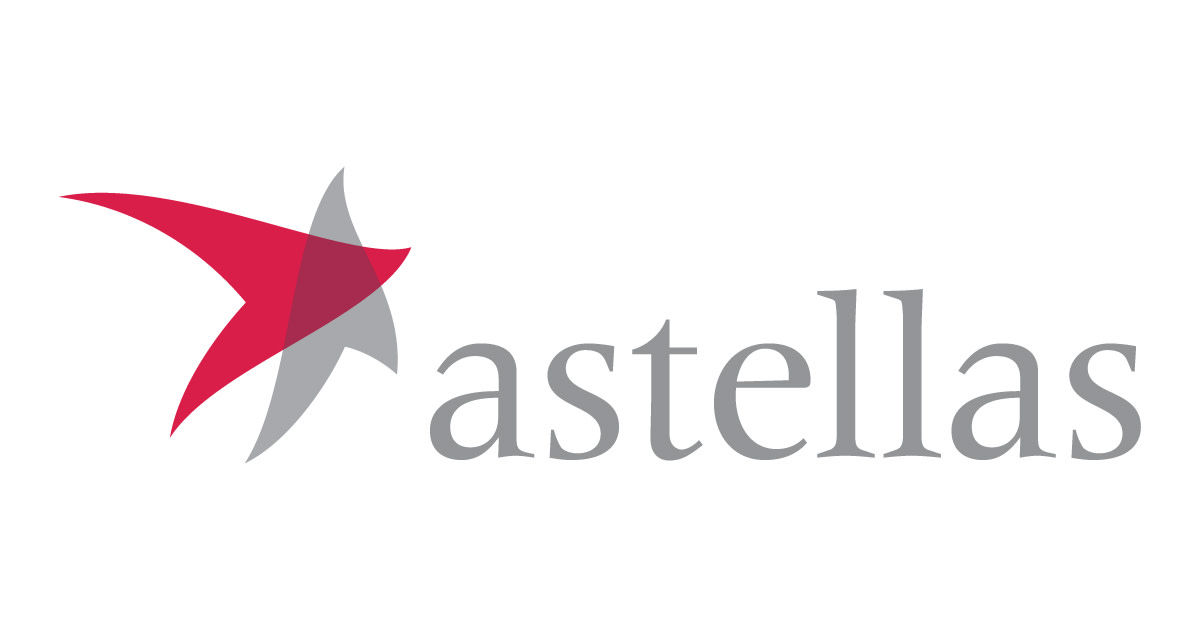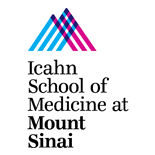预约演示
更新于:2025-05-07
Sobi, Inc.
更新于:2025-05-07
概览
标签
肿瘤
其他疾病
免疫系统疾病
小分子化药
单克隆抗体
疾病领域得分
一眼洞穿机构专注的疾病领域
暂无数据
技术平台
公司药物应用最多的技术
暂无数据
靶点
公司最常开发的靶点
暂无数据
| 排名前五的药物类型 | 数量 |
|---|---|
| 小分子化药 | 1 |
| 单克隆抗体 | 1 |
| 排名前五的靶点 | 数量 |
|---|---|
| ALK2 x CSF-1R x FLT3 x IRAK1 x JAK2 | 1 |
| IFNγ(干扰素-γ) | 1 |
关联
3
项与 Sobi, Inc. 相关的药物作用机制 ALK2抑制剂 [+4] |
最高研发阶段批准上市 |
首次获批国家/地区 美国 |
首次获批日期2022-02-28 |
靶点 |
作用机制 IFNγ抑制剂 |
原研机构 |
在研适应症 |
最高研发阶段批准上市 |
首次获批国家/地区 美国 |
首次获批日期2018-11-20 |
作用机制 TPO receptor激动剂 |
最高研发阶段批准上市 |
首次获批国家/地区 美国 |
首次获批日期2018-05-21 |
8
项与 Sobi, Inc. 相关的临床试验NCT06159491
Pacritinib in Combination With Azacitidine in Patients With Chronic Myelomonocytic Leukemia
This is a phase 1/2 trial of pacritinib in combination with azacitidine in patients with Chronic Myelomonocytic Leukemia (CMML). Patients will be newly diagnosed or previously treated but could not have received a prior JAK inhibitor. Patients who have previously been treated with a hypomethylating agent (HMA) must have received ≤ 1 cycle. Pacritinib will be initially tested at a dose of 200mg twice daily (dose level 0) in combination with azacitidine 75mg/m2, which can be administered subcutaneously or intravenously, for 7 days in a 28-day cycle. If there are 2 DLTs in the first 6 patients, there will be a dose escalation to pacritinib 100mg twice daily (dose level -1) and an additional 6 patients will be enrolled. Based on the phase 1, 3+3 dose de-escalation design, 6-12 patients will be enrolled in the phase 1 portion. After the completion of phase 1 and identification of the recommended phase 2 dose (RP2D), the trial will then proceed to phase 2 which will employ a Simon two stage design. This portion will include the 6 patients enrolled during the phase 1 portion at the MTD. An interim analysis for futility will occur. If 3 or fewer patients have had a clinical benefit (CB) or better, as defined by 2015 MDS/MPN IWG criteria, the PI and DSMC will meet to discuss the totality of the evidence and determine if the trial shall proceed. In the second stage, an additional 12 patients will be enrolled.
开始日期2024-09-18 |
申办/合作机构 |
NCT06285825
A Pilot Study of Emapalumab for the Treatment of CAR T-Cell Therapy-Associated Prolonged Cytopenia
To look at the safety and effectiveness of emapalumab for the treatment of prolonged severe cytopenia in participants with LBCL who receive CART.
开始日期2024-07-05 |
NCT05787574
Phase 2 Study BRIDGING PRE-TRANSPLANT INFLAMMATORY DAMPENING for PRIMARY IMMUNE REGULATORY DISORDERS (BRIDGE Trial)
The researchers are doing this study to find out whether emapalumab or a combination of fludarabine and dexamethasone are effective in preparing people with a primary immune regulatory disorder (PIRD) and/or an autoinflammatory condition to receive a stem cell transplant. The researchers will look at how well the study treatments reduce inflammation and aid in the engraftment process (the process of donated stem cells traveling to the bone marrow, where they begin to make new immune cells.
"Funding Source - FDA OOPD"
"Funding Source - FDA OOPD"
开始日期2023-03-15 |
申办/合作机构 |
100 项与 Sobi, Inc. 相关的临床结果
登录后查看更多信息
0 项与 Sobi, Inc. 相关的专利(医药)
登录后查看更多信息
42
项与 Sobi, Inc. 相关的文献(医药)2025-03-28·Journal of the National Comprehensive Cancer Network
BPI25-014: Pacritinib in Patients With Intermediate-1 Risk Myelofibrosis: Outcomes From Post-Hoc Analysis of Two Phase 3 Studies
Article
作者: Vredenburg, Michael ; Vachhani, Pankit ; Podoltsev, Nikolai ; Roman-Torres, Karisse ; Gerds, Aaron ; Suthar, Purvi ; Kishtagari, Ashwin
2024-11-05·Blood
Analysis of Durability of Response to Avatrombopag (AVA) from a Phase 3b Multicenter, Randomized, Double-Blind, Placebo (PBO)-Controlled, Parallel-Group Trial to Evaluate the Efficacy and Safety of AVA for the Treatment of Pediatric Patients with Immune Thrombocytopenia
作者: Grainger, John D. ; Kolodny, Scott ; Aydinok, Yesim ; Grace, Rachael F. ; Jamieson, Brian ; Leblebisatan, Goksel ; Unal, Sule ; Zhang, Jessica
2024-11-05·Blood
Transplant Related Outcomes in Patients with Hemophagocytic Lymphohistiocytosis Treated with Emapalumab As a Bridge to Hematopoietic Stem Cell Transplantation: The Real-HLH Study
作者: Leiding, Jennifer W ; Pednekar, Priti ; Walkovich, Kelly J. ; Yee, John ; Jordan, Michael B. ; Chandrakasan, Shanmuganathan ; Oladapo, Abiola ; Allen, Carl E ; Marrone, Michael
100
项与 Sobi, Inc. 相关的新闻(医药)2025-04-23
STOCKHOLM, April 23, 2025 /PRNewswire/ -- Sobi® (STO: SOBI) presents clinical data aimed at updating the global haemophilia community attending this year's WFH 2025 Comprehensive Care Summit in Dubai from the 23 – 25 April. New and updated outcomes and analyses will be presented from the XTEND phase 3clinical program testing the effectiveness of Altuvoct® (efanesoctocog alfa) treatment for haemophilia A, including updates on patients' joint health and surgical outcomes in patients.
"At WFH 2025 CCS, Sobi will present highlights from the XTEND phase 3 program and discuss the new treatment paradigm with FVIII levels in the non-haemophilia range. Sharing these clinical outcomes with the wider haemophilia community will help to ensure the latest treatment approaches are widely known and understood," said Lydia Abad-Franch, MD, MBA, Head of Research, Development, and Medical Affairs (RDMA), and Chief Medical Officer at Sobi.
Key data to be presented at WFH 2025 Comprehensive Care Summit, Dubai, UAE
Altuvoct® (efanesoctocog alfa)
About efanesoctocog alfa
Efanesoctocog alfa [Antihemophilic Factor (Recombinant), Fc-VWF-XTEN Fusion Protein] (formerly BIVV001) is a novel and significant part of the week factor VIII therapy. It has the potential to deliver near-normal factor activity levels for significant parts of the week, improving bleed protection in a once-weekly dose for people with haemophilia A. Efanesoctocog alfa builds on the innovative Fc fusion technology by adding a region of von Willebrand factor and XTEN® polypeptides to extend its time in circulation. It is the only therapy that has been shown to break through the von Willebrand factor ceiling, which imposes a half-life limitation on current factor VIII therapies. It was approved as ALTUVIIIO™ [Antihemophilic Factor (Recombinant), Fc-VWF-XTEN Fusion Protein-ehtl] by Sanofi in the US in February 2023.
About the Sobi and Sanofi collaboration
Sobi and Sanofi collaborate on the development and commercialisation of Alprolix® and Elocta®/Eloctate®. The companies also collaborate on the development and commercialisation of efanesoctocog alfa, referred to as ALTUVIIIO™ in the USA and ALTOVUCT in Europe. An investigational factor VIII therapy with the potential to provide high sustained factor activity levels with once-weekly dosing for people with haemophilia A. Sobi has final development and commercialisation rights in the Sobi territory (essentially Europe, North Africa, Russia and most Middle Eastern markets). Sanofi has final development and commercialisation rights in North America and all other regions in the world excluding the Sobi territory.
Sobi®
Sobi is a specialised international biopharmaceutical company transforming the lives of people with rare diseases. Providing sustainable access to innovative medicines in the areas of haematology, immunology and specialty care, Sobi has approximately 1,800 employees across Europe, North America, the Middle East and Asia. In 2022, revenue amounted to SEK 18.8 billion. Sobi's share (STO:SOBI) is listed on Nasdaq Stockholm. More about Sobi at sobi.com, LinkedIn and YouTube.
Contact
For details on how to contact the Sobi Investor Relations Team, please click here. For Sobi Media contacts, click here.
This information was brought to you by Cision
The following files are available for download:
WANT YOUR COMPANY'S NEWS FEATURED ON PRNEWSWIRE.COM?
440k+
Newsrooms &
Influencers
9k+
Digital Media
Outlets
270k+
Journalists
Opted In
GET STARTED
临床3期上市批准生物类似药
2025-03-19
STOCKHOLM, March 19, 2025 /PRNewswire/ -- Sobi
® (STO: SOBI), today announced a research collaboration involving a new Phase 2a clinical trial for Gamifant® (emapalumab) for the potential treatment of interferon-gamma (IFNγ)-driven sepsis (IDS) which is to be presented at the International Symposium on Intensive Care and Emergency Medicine (ISICEM) Congress by Prof. Giamarellos-Bourboulis, from the Hellenic Institute for the Study of Sepsis. The study underscores Sobi's commitment to advancing medicine through targeted therapies for severe and complex conditions such as sepsis, a leading cause of mortality globally.
Key Highlights
IDS is a new endotype representing approximately 20 percent of sepsis patients and is characterised by detection of IFNγ (above lower limit of detection) and elevated levels of the chemokine CXCL9.
The EMBRACE phase 2a study will investigate the potential of Gamifant® (emapalumab) in treating a subgroup of sepsis patients driven by the IDS endotype and absence of sepsis-induced immunoparalysis.
IDS patients with a low human leukocyte antigen DR (HLA-DR) expression on monocytes characteristic of immunoparalysis will not be included into the EMBRACE study. The potential inclusion of this IDS sub-population into further studies will be evaluated based on the results of EMBRACE.
The EMBRACE phase 2a trial (NCT06694701) was approved in March 2025. The first trial sites have been initiated, and patient screening to identify eligible patients with IDS has started.
The trial design is to be presented at ISICEM by Prof. Evangelos Giamarellos-Bourboulis, MD, PhD, FISAC, principal investigator and sponsor of the EMBRACE study, from the Hellenic Institute for the Study of Sepsis (HISS): "The EMBRACE Phase 2a study will adopt a precision immunotherapy approach for the treatment of sepsis driven by the IDS endotype, a patient group currently having limited therapeutic choices."
"We are looking forward to this research collaboration on the use of Gamifant® (emapalumab) in the new endotype of interferon gamma-driven sepsis," said Lydia Abad-Franch, MD, Head of Research & Development and Medical Affairs and Chief Medical Officer at Sobi. "We are committed to advancing science and study Gamifant® (emapalumab) in indications with a high unmet need and where excessive interferon gamma production plays a key role in driving hyperinflammation."
Presentation details
Emapalumab treatment for anticipated clinical benefit in sepsis driven by the interferon-gamma endotype (the EMBRACE trial): O Konstantinidou, E Olntasi, H Florou, A Reininger, E Giamarellos-Bourboulis, F EMBRACE STUDY GROUP. ISICEM 2025; Abstract number A173; Poster number P249.
About sepsis and IFNγ-driven sepsis (IDS)
Sepsis is a serious condition in response to an infection that can lead to organ failure and is a leading global cause of mortality. A recent large study, published in eBioMedicine in 20241, describes different sepsis endotypes, suggesting varying endotypes require differentiated treatment strategies. Approximately 20% of the patients studied are of the newly described IFNγ-driven sepsis (IDS) endotype. IDS is marked by elevated levels of CXCL9 and detection of IFNγ and poor clinical outcomes, with a 28-day mortality rate ranging from 40 to 43%.
About the EMBRACE study
The
EMBRACE study (NCT06694701) is a Phase 2a, double-blind, randomized controlled trial planned to be conducted at 24 sites in Greece. The trial investigates whether Gamifant® (emapalumab), an anti-IFNγ antibody, can improve clinical outcomes in patients with the interferon-gamma-driven sepsis (IDS) endotype and absence of sepsis-induced immunoparalysis. IDS is characterized by elevated levels of CXCL9 and detectable IFNγ and is associated with poor patient outcomes. By targeting this inflammation pathway, the EMBRACE trial aims to reduce mortality, improve organ function, and accelerate recovery.
The trial design includes three arms, and plans to enrol 75 patients, two groups receiving Gamifant® (emapalumab), (low and high doses) alongside standard-of-care treatment, and one group receiving placebo alongside standard-of-care treatment. The primary endpoint is a ≥1.4-point decrease in the Sequential Organ Failure Assessment (SOFA) score from baseline to the end of treatment (28 days). Secondary endpoints include 28-day mortality, safety, pharmacokinetics, and changes in key inflammatory biomarkers such as CRP, IL-6, ferritin, IFNγ, and CXCL9.
About Gamifant®
(emapalumab)
Gamifant® (emapalumab) is an anti-interferon gamma (IFNγ) monoclonal antibody that binds to and neutralises IFNγ. In the USA, Gamifant® (emapalumab) is indicated for the treatment of adult and paediatric (newborn and older) patients with primary haemophagocytic lymphohistiocytosis (HLH) with refractory, recurrent or progressive disease or intolerance with conventional HLH therapy. Primary HLH is a rare syndrome of hyperinflammation that usually occurs within the first year of life and can rapidly become fatal unless diagnosed and treated. The FDA approval is based on data from the phase 2/3 studies (NCT01818492 and NCT02069899). Gamifant® (emapalumab) is indicated for administration through intravenous infusion over one hour twice per week until haematopoietic stem cell transplantation (HSCT)
About Sobi®
Sobi® is a specialised international biopharmaceutical company transforming the lives of people with rare and debilitating diseases. Providing reliable access to innovative medicines in the areas of haematology, immunology, and specialty care. Sobi has approximately 1,800 employees across Europe, North America, the Middle East, Asia, and Australia. In 2024, revenue amounted to SEK 26 billion. Sobi's share (STO:SOBI) is listed on Nasdaq Stockholm. More about Sobi at sobi.com and LinkedIn.
1: Interferon-gamma driven elevation of CXCL9: a new sepsis endotype independently associated with mortality Giamarellos-Bourboulis, Evangelos J. et al. eBioMedicine, Volume 109, 105414
Contacts
For details on how to contact the Sobi Investor Relations Team, please click here. For Sobi Media contacts, click here.
This information was brought to you by Cision
The following files are available for download:
WANT YOUR COMPANY'S NEWS FEATURED ON PRNEWSWIRE.COM?
440k+
Newsrooms &
Influencers
9k+
Digital Media
Outlets
270k+
Journalists
Opted In
GET STARTED
临床2期上市批准免疫疗法
2025-02-27
STOCKHOLM, Feb. 27, 2025 /PRNewswire/ -- Sobi® (STO: SOBI), today announced that the U.S. Food and Drug Administration (FDA) has accepted the supplemental Biologics License Application (sBLA) for Gamifant® (emapalumab-Izsg) for use in adult and paediatric patients with hemophagocytic lymphohistiocytosis (HLH)/macrophage activation syndrome (MAS) in Still's disease with an inadequate response or intolerance to glucocorticoids, or with recurrent MAS. The application was granted Priority Review with a PDUFA date of June 27, 2025.
HLH/MAS, a form of HLH, is a severe complication of rheumatic diseases, occurring most frequently in Still's disease including systemic juvenile idiopathic arthritis (sJIA) and adult-onset Still's disease (AOSD). HLH/MAS is a rare systemic disorder of hyperinflammation with common clinical manifestations such as high persistent fever, elevated ferritin, cytopenias, coagulopathies, and hepatosplenomegaly.
"HLH/MAS in Still's disease is a serious and potentially fatal complication where patients can experience intense hyperinflammation and even multiple organ failure," said Lydia Abad-Franch, MD, MBA, Head of R&D and Chief Medical Officer at Sobi. "There is no approved therapy for HLH/MAS today. Gamifant® (emapalumab-Izsg) selectively neutralizes interferon gamma (IFN-γ), a key driver of hyperinflammation, and if approved, may also help reduce the need for high-dose glucocorticoids in these patients."
The application is based on results from pooled data from two studies which enrolled a total of 39 patients, the EMERALD (NCT05001737) and the NI-0501-06 (NCT03311854) studies. Fifty-three percent of patients had a complete response at Week 8 and 85% had a complete response at any time during the studies. Weekly mean glucocorticoid doses were reduced by 70.1% after 2 weeks of treatment.
Gamifant® (emapalumab-Izsg) a monoclonal antibody that binds and neutralises interferon gamma (IFN-y), was approved by the FDA in 2018 for the treatment of adult and paediatric (newborn and older) patients with primary HLH with refractory, recurrent, or progressive disease or intolerance with conventional HLH therapy.
About macrophage activation syndrome (MAS)
Macrophage activation syndrome (MAS) is a severe complication of rheumatic diseases, most frequently systemic juvenile idiopathic arthritis (sJIA) and adult-onset Still's disease (AOSD). MAS is characterised by fever, hepatosplenomegaly, liver dysfunction, cytopenias, coagulation abnormalities and hyperferritinemia, possibly progressing to multiple organ failure and death. MAS is classified as a form of hemophagocytic lymphohistiocytosis (HLH).
About Gamifant® (emapalumab-lzsg)
Gamifant® (emapalumab-lzsg) is an anti-interferon gamma (IFN-γ) monoclonal antibody that binds to and neutralises IFN-γ. In the USA, Gamifant® (emapalumab-lzsg) is the first and only treatment approved by the FDA for the treatment of adult and paediatric (newborn and older) patients with primary hemophagocytic lymphohistiocytosis (HLH) with refractory, recurrent or progressive disease or intolerance with conventional HLH therapy. Primary HLH is a rare syndrome of hyperinflammation that usually occurs within the first year of life and can rapidly become fatal unless diagnosed and treated. The FDA approval is based on data from the phase 2/3 studies (NCT01818492 and NCT02069899). Gamifant® (emapalumab-lzsg) is indicated for administration through intravenous infusion over one hour twice per week until hematopoietic stem cell transplantation (HSCT).
About Sobi®
Sobi® is a specialised international biopharmaceutical company transforming the lives of people with rare and debilitating diseases. Providing reliable access to innovative medicines in the areas of haematology, immunology, and specialty care, Sobi has approximately 1,800 employees across Europe, North America, the Middle East, Asia, and Australia. In 2024, revenue amounted to SEK 26 billion. Sobi's share (STO:SOBI) is listed on Nasdaq Stockholm. More about Sobi at sobi.com and LinkedIn.
Contacts
For details on how to contact the Sobi Investor Relations Team, please click here. For Sobi Media contacts, click here.
This information was brought to you by Cision
The following files are available for download:
WANT YOUR COMPANY'S NEWS FEATURED ON PRNEWSWIRE.COM?
440k+
Newsrooms &
Influencers
9k+
Digital Media
Outlets
270k+
Journalists
Opted In
GET STARTED
上市批准优先审批临床结果
100 项与 Sobi, Inc. 相关的药物交易
登录后查看更多信息
100 项与 Sobi, Inc. 相关的转化医学
登录后查看更多信息
组织架构
使用我们的机构树数据加速您的研究。
登录
或

管线布局
2025年11月02日管线快照
管线布局中药物为当前组织机构及其子机构作为药物机构进行统计,早期临床1期并入临床1期,临床1/2期并入临床2期,临床2/3期并入临床3期
临床2期
1
1
批准上市
其他
1
登录后查看更多信息
当前项目
| 药物(靶点) | 适应症 | 全球最高研发状态 |
|---|---|---|
帕克替尼 ( ALK2 x CSF-1R x FLT3 x IRAK1 x JAK2 ) | 原发性骨髓纤维化 更多 | 批准上市 |
依马利尤单抗 ( IFNγ ) | 原发性免疫缺陷疾病 更多 | 临床2期 |
马来酸阿伐曲泊帕 ( TPO receptor ) | 套细胞淋巴瘤 更多 | 终止 |
登录后查看更多信息
药物交易
使用我们的药物交易数据加速您的研究。
登录
或

转化医学
使用我们的转化医学数据加速您的研究。
登录
或

营收
使用 Synapse 探索超过 36 万个组织的财务状况。
登录
或

科研基金(NIH)
访问超过 200 万项资助和基金信息,以提升您的研究之旅。
登录
或

投资
深入了解从初创企业到成熟企业的最新公司投资动态。
登录
或

融资
发掘融资趋势以验证和推进您的投资机会。
登录
或

生物医药百科问答
全新生物医药AI Agent 覆盖科研全链路,让突破性发现快人一步
立即开始免费试用!
智慧芽新药情报库是智慧芽专为生命科学人士构建的基于AI的创新药情报平台,助您全方位提升您的研发与决策效率。
立即开始数据试用!
智慧芽新药库数据也通过智慧芽数据服务平台,以API或者数据包形式对外开放,助您更加充分利用智慧芽新药情报信息。
生物序列数据库
生物药研发创新
免费使用
化学结构数据库
小分子化药研发创新
免费使用
